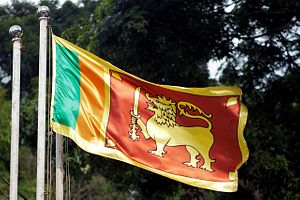A new 68-page report from the International Truth and Justice Project (ITJP) demonstrates how torture has been institutionalized in Sri Lanka. It is shown to be the direct consequence of Sri Lanka continuing to use the Prevention of Terrorism Act (PTA) implemented in 1978. The PTA was described as an “an ugly blot on the statute book of any civilized country” by the International Commission of Jurists in 1984. This was not surprising given that the PTA deems “confessions” obtained under torture admissible. Despite promises made to remove the piece of legislation, no action has been taken to do so. As such, torture remains a “legitimate” way to deal with suspects in Sri Lanka.
Although the civil war ended in May 2009, torture continues to be practiced by the current administration headed by Maithripala Sirisena just as it was in the previous regime under Mahinda Rajapaksa to help in mopping up a campaign against suspected former LTTE and in the ongoing persecution of Tamils involved in human rights work.
The ITJP’s investigation began when it sought to carry out a check on one of Sri Lanka’s delegates to the United Nations (UN) Committee Against Torture in 2016, Sisira Mendis. This man’s inclusion caused concerns because he was named in the seminal 2015 United Nations investigation report on Sri Lanka as the officer presiding over the Criminal Investigations Department (CID) and the Terrorist Investigations Division (TID) in Colombo, described by the UN as “particularly notorious” for torture.
According to the ITJP’s latest report, several key TID officials were identified by survivors of torture. Many of these alleged torturers, however, remain in senior positions in the police force. Some have been rewarded with promotions and sent abroad for training.
The TID operated in plain sight with detention facilities in the police building on York Street, right in the center of Colombo’s business district. The building is part of Sri Lanka’s Criminal Investigation Department (CID) whose offices in the fourth floor have become synonymous with torture. As pointed out by ITJP in an earlier report, “Fourth Floor” is a term Sri Lankans use as a euphemism for torture.
Torture Rewarded
The ITJP’s report focuses on torture carried out in two centers, the York Street building in Colombo and Boosa in the Southern Province. Both are widely known as places where torture is routinely used. According to an insider, competition is fierce between different units to find buried weapons or LTTE assets or uncover conspiracies. And often this involves fabrications of stories obtained under torture. According to this insider:
“CID and TID officers can easily get promoted if they find LTTE leaders or if they find weapons. Or if they find out there was a plan to assassinate a politician. They just invented these stories, tortured the person to confess the plan and the officers got promoted… Most of the recovered weapons were not handed over to the government, they were sold to the mafia and the officers kept the money for themselves. The underworld mafia in Sri Lanka got a lot of their weapons this way.”
The ITJP report refers to a visit to Sri Lanka by Ben Emmerson, the UN special rapporteur on the promotion and protection of human rights and fundamental freedoms while countering terrorism. Emmerson had this to say: “The use of torture has been, and remains today, endemic and routine, for those arrested and detained on national security grounds.” The PTA, he said, was used “disproportionately against members of the Tamil community and that the community had ‘borne the brunt of the state’s well-oiled torture apparatus.” According to Emmerson, the PTA under which torture was legitimized, is a “deeply flawed piece of legislation that includes acts that would hardly qualify as terrorist even by the most generous definition.”
In his damning evaluation of the PTA, Emmerson pointed out that the act grants very broad powers of arrest and detention to the police, allowing arrests without a warrant and allowing indefinite detention of suspects.
The ITJP report also mentions the obsessions of Sri Lankan interrogators with identifying the location of buried caches of LTTE weapons. Insiders within TID have alleged that officers receive a 40 percent cut of the black market value of whatever they recover. TID officials are also tied directly to people-smuggling where suspects are abducted and threatened with torture unless they leave the country. A sum of money is obtained from the abductees before they are handed over to the people-smugglers. ITJP has also cited cases of TID officers stationed at the airport in Colombo abducting visitors after clearing immigration and releasing them after torture and payment of money.
The ITJP’s press release notes that it had identified 58 alleged torturers, including those in command positions. According to ITJP’s Executive Director, Yasmin Sooka:
“TID officials allegedly involved in torture were named by a UN expert in 2007, by a UN investigation in 2015, by Sri Lankan NGOs and human rights lawyers for decades and now in 2019 by the ITJP in court documents submitted in California in support of the case under the Torture Victims Prevention Act against former defence secretary Gotabaya Rajapaksa – but no action is ever taken. The alleged torturers continue to survive every regime change”
In its recommendations, ITJP has called on the Sri Lankan state to appoint an independent special investigator to investigate the matters identified in its report, and makes the strong point that Sri Lanka’s Criminal procedure codes should be amended only to accept confessions which are made in the presence of a competent and truly independent lawyer and should further be confirmed before a judge.
Ana Pararajasingham was Director-Programmes with the Centre for Just Peace and Democracy (CJPD). He is the author of “Sri Lanka’s Endangered Peace Process and the Way Forward” (2007), Sri Lanka A Victor’s Peace (2019) and editor of “Sri Lanka 60 Years of ‘independence and Beyond” (2009).
































